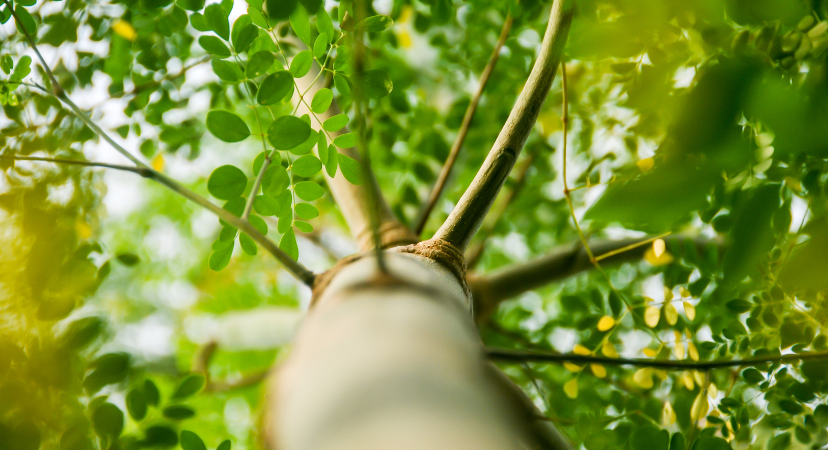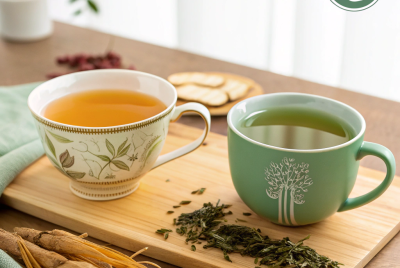Moringa Tree: A Natural Pharmacy In Your Backyard
Have you ever wished for a natural, all-in-one solution to boost your health and well-being, right at your fingertips? Imagine stepping into your backyard and finding a tree that’s not only packed with essential vitamins and minerals but also offers a myriad of medicinal benefits. Meet the Moringa tree, often hailed as the “Miracle Tree.” This unassuming plant, with its roots in the Himalayan foothills of northern India, has been revered for centuries as a natural pharmacy. From enhancing your diet with nutrient-rich leaves to supporting environmental sustainability, the Moringa tree is a remarkable addition to any home garden. Join me on a journey to discover how planting this powerhouse tree can transform your health and lifestyle.
Why You Should Plant a Moringa Tree
Planting a Moringa tree in your backyard is a simple yet impactful way to improve your health and contribute to environmental sustainability. Moringa trees grow rapidly, often reaching up to 12 meters in height. They are resilient to drought, making them an ideal choice for regions with variable rainfall.
From my own experience, having a Moringa tree has transformed my diet and lifestyle. The leaves, pods, seeds, and even flowers are packed with vitamins, minerals, and antioxidants. Including them in my meals has significantly boosted my energy levels and overall well-being.
Nutritional Benefits of Moringa
One of the most compelling reasons to grow Moringa is its unparalleled nutritional profile. The leaves are particularly rich in:
- Vitamin A: Essential for vision and immune function.
- Vitamin C: Supports skin health and immune system.
- Calcium: Strengthens bones and teeth.
- Potassium: Regulates blood pressure and heart function.
- Protein: Contains all essential amino acids.
Incorporating Moringa into your diet can be as simple as adding dried leaf powder to smoothies, soups, or salads. The fresh leaves can be cooked like spinach, making them a versatile ingredient in various dishes.
Environmental Impact of Moringa Trees
Moringa trees are not only beneficial for personal health but also for the environment. These trees:
- Improve Soil Fertility: Their deep roots help stabilize soil and prevent erosion.
- Provide Shade and Windbreaks: Their dense foliage offers protection to other plants and crops.
- Purify Water: Crushed Moringa seeds can be used to purify water, removing impurities and bacteria.
Growing Moringa Trees
Growing Moringa trees is relatively easy, even for novice gardeners. Here’s a step-by-step guide based on my own successful planting experience:
- Select a Sunny Spot: Moringa trees thrive in full sunlight.
- Prepare the Soil: Ensure well-drained soil. Moringa prefers sandy or loamy soils.
- Plant Seeds or Cuttings: Sow seeds directly in the ground or plant cuttings from a mature tree.
- Water Regularly: Keep the soil moist but not waterlogged.
- Prune for Health: Regular pruning encourages bushier growth and more leaves.
Uses of Moringa Tree Parts
Nearly every part of the Moringa tree can be consumed and offers nutritional benefits. The consumable parts include:
- Leaves: Rich in vitamins, minerals, and antioxidants, they can be eaten fresh, cooked, or dried and powdered for use in soups, sauces, and smoothies.
- Pods (Drumsticks): Often used in cooking, particularly in South Asian cuisine, they can be boiled, sautéed, or included in curries and stews.
- Seeds: Can be eaten when young and tender, cooked like peas, or dried and roasted. They also produce an oil known as ben oil, which is used in cooking and cosmetics.
- Flowers: Edible when cooked and often used in salads or as a garnish. They can also be brewed into a tea.
- Roots: Though consumed sparingly due to potential toxicity in large amounts, they can be grated and used as a condiment.
- Bark: Sometimes used in traditional medicine, though less commonly eaten.
Each part of the Moringa tree offers unique nutritional and health benefits, making it a valuable addition to diets in many cultures.
My Journey with Moringa
When I first heard about Moringa, I was intrigued by its reputation as a “Miracle Tree.” I decided to plant one in my backyard, and the results have been astonishing. The tree grew quickly, and soon I had an abundance of leaves and pods to harvest. I started incorporating Moringa into my diet, and within a few weeks, I noticed a significant improvement in my energy levels and overall health.
Moringa in Traditional Medicine
Moringa has been used in traditional medicine for centuries. It is known for its anti-inflammatory, antioxidant, and antimicrobial properties. Here are a few traditional uses:
- Digestive Health: Moringa leaves can help with digestive issues like constipation.
- Anti-inflammatory: The tree’s extracts can reduce inflammation and pain.
- Blood Sugar Regulation: Some studies suggest Moringa may help regulate blood sugar levels.
Incorporating Moringa into Your Diet
Here are a few of my favourite ways to enjoy Moringa:
- Moringa Smoothie: Blend Moringa powder with banana, spinach, and almond milk.
- Moringa Soup: Add fresh leaves to vegetable or any soup for a nutritional boost.
- Moringa Tea: Steep dried leaves in hot water for a refreshing and healthy tea.
Moringa and Sustainable Living
Growing Moringa is a step towards sustainable living. The tree’s ability to thrive in poor soils and its multiple uses make it an excellent choice for those looking to live more sustainably. By planting Moringa, you are not only enhancing your own health but also contributing to the well-being of the planet.
Moringa in Different Cultures
Moringa is cherished in many cultures around the world. In India, it’s a staple in many traditional dishes. In Africa, it is used to combat malnutrition. In the Caribbean, it is known for its health benefits and used in various remedies.
Conclusion
Moringa trees are truly miraculous. They offer unparalleled nutritional benefits, support environmental sustainability, and have a myriad of uses in food and medicine. Planting a Moringa tree in your backyard is a simple yet powerful way to enhance your health and contribute to a sustainable future.
FAQs
1. Can Moringa tree grow in cold climates?
Moringa trees prefer tropical and subtropical climates. They can tolerate light frost, but prolonged exposure to cold can damage or kill the tree.
2. How long does it take for a Moringa tree to start producing leaves and pods?
Moringa trees grow rapidly. You can start harvesting leaves within a few months, and pods typically within the first year.
3. Is it safe to consume all parts of the Moringa tree?
While most parts of the Moringa tree are safe to consume, the roots and bark should be eaten in moderation due to potential toxicity.
4. How can Moringa seeds purify water?
Crushed Moringa seeds can act as a natural coagulant, binding impurities and bacteria in water, making them easier to remove.
5. What are the main health benefits of Moringa?
Moringa is rich in essential nutrients, antioxidants, and anti-inflammatory compounds. It supports immune function, improves digestion, and can help regulate blood sugar levels.





